For decades, the fashion world told us there was one way to be a model: tall, thin, and flawless. But that story is over. Today, the runway isn’t just filled with faces-it’s filled with stories. Women and men who refused to fit the mold are rewriting the rules, and the industry is finally listening.
Who Changed the Game?
| Name | Breakthrough Moment | Impact |
|---|---|---|
| Ashley Graham | First plus-size model on the cover of Vogue US (2016) | Proved size 14 models could headline global campaigns |
| Rihanna | Launched Fenty Beauty with 40 foundation shades (2017) | Forced beauty brands to stop ignoring skin tones |
| Lila Moss | Walked for Chanel and Prada with visible vitiligo | Normalized skin differences as beauty |
| Harris Reed | First non-binary model in a major fashion house campaign (Gucci, 2020) | Challenged gender norms on runways worldwide |
| Naima Mora | Won America’s Next Top Model in 2005 as a Black woman with curves | Opened doors for Black models beyond the "token" role |
These aren’t just names on a list. They’re people who walked into rooms where no one looked like them-and refused to leave until they were seen.
The Old Rules Were Never Fair
For years, agencies told aspiring models they needed to be 5’9” or taller, under 115 pounds, and have zero body hair. If you didn’t match that, you got told to come back when you were "ready."
But what does "ready" even mean? Ready to be invisible? Ready to starve? Ready to pretend your body isn’t real?
The truth is, the old standards weren’t about beauty. They were about control. They kept the industry small, exclusive, and profitable by limiting who could be part of it. And for a long time, that worked-because no one challenged it.
Then came social media. Suddenly, models didn’t need agencies to get seen. A single post could go viral. A hashtag could start a movement. Girls in wheelchairs, trans men in suits, women over 50 in silk dresses-they started posting. And people responded. Not with pity. Not with curiosity. With admiration.
It’s Not Just About Looks-It’s About Representation
When a young girl sees a model who looks like her-same skin tone, same body shape, same scar, same disability-something shifts inside her. She stops thinking she needs to change to be worthy.
That’s the real power of these trailblazers. They’re not just walking runways. They’re changing how kids see themselves.
Take the story of Alyssa Thompson, a 16-year-old with Down syndrome who landed a campaign with Nike in 2024. Her face was on billboards across 12 countries. No retouching. No hiding. Just her-smiling, strong, real. Brands didn’t just hire her because it was "trendy." They hired her because she made people feel something.
That’s the new metric: emotional connection. Not measurements.
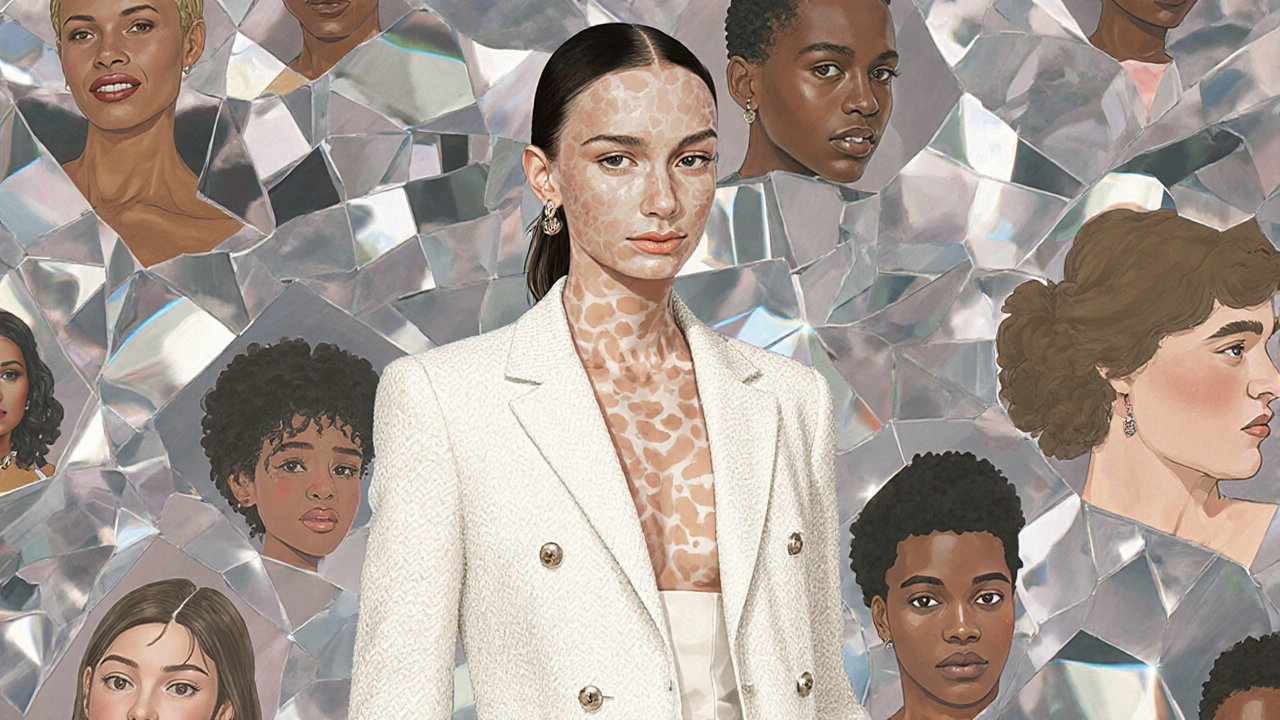
What’s Still Broken?
Progress isn’t perfect. And it’s not evenly spread.
While plus-size models are now common in magazines, they’re still rarely cast in high-fashion campaigns for brands like Dior or Louis Vuitton. Trans models get booked for diversity photoshoots-but rarely as the face of a luxury line. Dark-skinned models still earn less than their lighter-skinned peers, even when they have the same following.
And let’s not forget: most of the "diverse" faces you see today are still young, able-bodied, and conventionally attractive in their own way. The real outliers-elders with wrinkles, people with prosthetics, those with severe acne or alopecia-are still missing.
Change is happening. But it’s slow. And it’s uneven. That’s why the next wave of models isn’t just about breaking barriers-it’s about tearing them down completely.
How the Industry Is Responding
Brands aren’t just reacting to pressure. They’re realizing inclusion sells.
When Savage X Fenty launched its 2023 show featuring models of all sizes, ages, genders, and abilities, it pulled in 12 million views on Amazon Prime. That’s more than any traditional fashion show in history.
Same with Revolve’s 2024 campaign featuring 78-year-old model Barbara Chase. Sales jumped 42% in the week after launch. Why? Because people saw themselves-and they bought.
Agencies are finally hiring diversity consultants. Some are even changing their minimum height requirements. In 2025, the London-based agency The Collective stopped requiring models to be under 25. They now represent people up to age 70.
This isn’t charity. It’s business. And the numbers don’t lie.
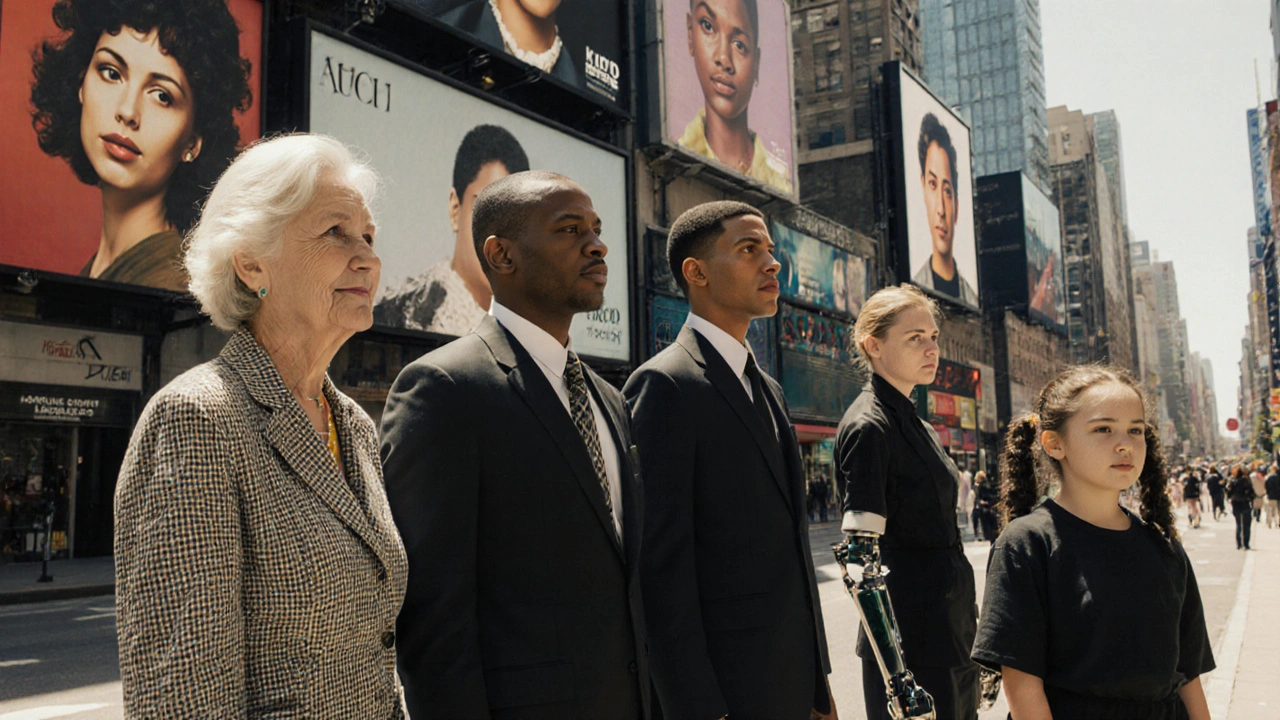
What This Means for Aspiring Models
If you’re thinking about modeling but feel like you don’t fit the mold-you’re exactly who the industry needs now.
You don’t need to wait for permission. Start posting. Build a portfolio that shows your truth. Don’t edit out your stretch marks, your freckles, your scars. They’re not flaws. They’re your story.
Look for agencies that don’t just say they’re "inclusive"-but actually have a track record. Check their past campaigns. Do they feature people who look like you? Ask direct questions: "Do you represent models with disabilities? Trans models? Over 40?" If they hesitate, walk away.
The gatekeepers are gone. The door is open. You just have to walk through it.
The Future Is Already Here
Five years ago, a model with vitiligo walking for Chanel would’ve been unthinkable. Now it’s routine.
A decade ago, a non-binary model on the cover of Elle was a headline. Now it’s just another issue.
The next generation won’t remember when models had to be perfect. They’ll wonder why anyone ever thought that was the rule.
These pioneers didn’t wait for the industry to catch up. They built new runways. They wrote new rules. And they made space-for everyone.
Their legacy isn’t just in the photos. It’s in the little girl who now believes she belongs. In the boy who walks into a casting room and says, "I’m not changing for anyone." In the 60-year-old woman who finally sees herself in a magazine and smiles.
That’s the real breakthrough.
Who are the top models breaking barriers today?
Today’s top barrier-breaking models include Ashley Graham (plus-size), Lila Moss (vitiligo), Harris Reed (non-binary), Naima Mora (Black curves), and Alyssa Thompson (Down syndrome). These models aren’t just working-they’re changing industry standards by demanding visibility for bodies and identities long ignored.
Why are diversity and inclusion important in modeling?
Diversity in modeling reflects real life. When people see themselves represented, it boosts self-worth and drives sales. Brands that embrace inclusion see higher engagement, better customer loyalty, and increased revenue. More than that, it tells marginalized communities they matter-and that’s not just good business. It’s right.
Can you become a model if you don’t fit traditional standards?
Absolutely. The old rules-height, weight, age, skin tone-are fading. Today’s top agencies are actively seeking models with unique features: scars, tattoos, disabilities, gray hair, curves, and more. Your authenticity is your strength. Start building your portfolio with real photos, tag inclusive brands, and connect with agencies that value diversity over conformity.
Which brands are leading in inclusive modeling?
Savage X Fenty, Fenty Beauty, Aerie, Nike, Revolve, and Universal Standard are leading the charge. They regularly feature models of all sizes, races, genders, ages, and abilities. Their campaigns don’t just check boxes-they celebrate real people. Look to them for inspiration and partnerships.
How can I support inclusive modeling?
Follow and engage with diverse models on social media. Buy from brands that prioritize inclusion. Call out brands that tokenize diversity. Share stories that challenge old norms. Your attention and spending power shape the industry. Don’t wait for change-be part of it.

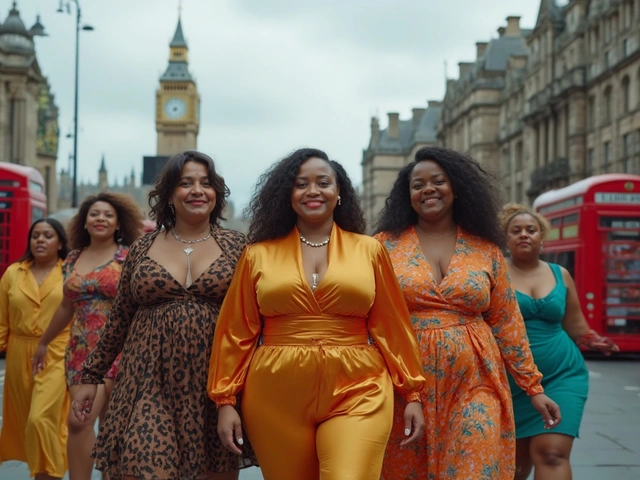
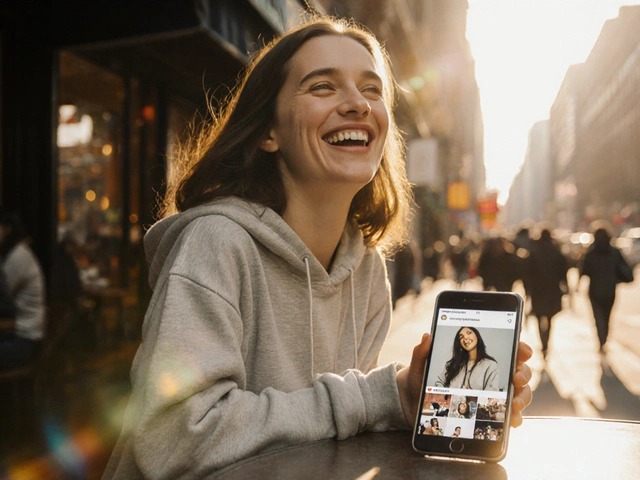
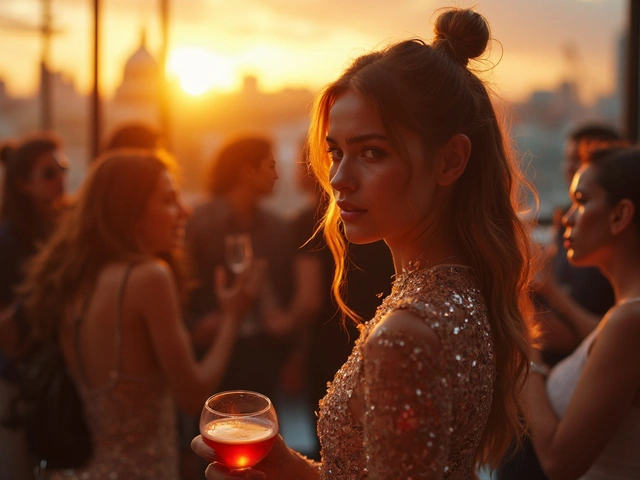
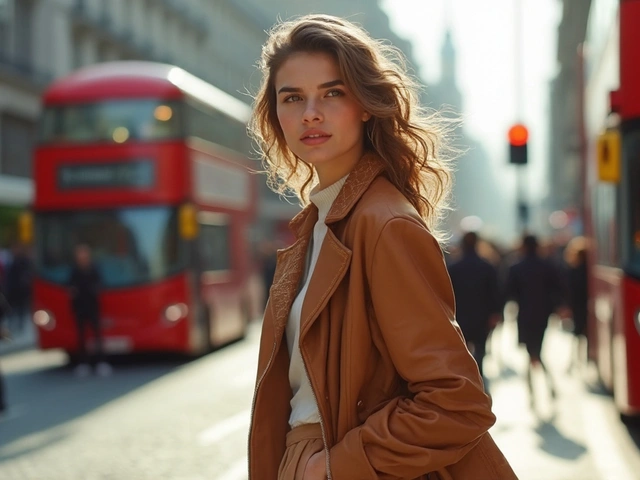

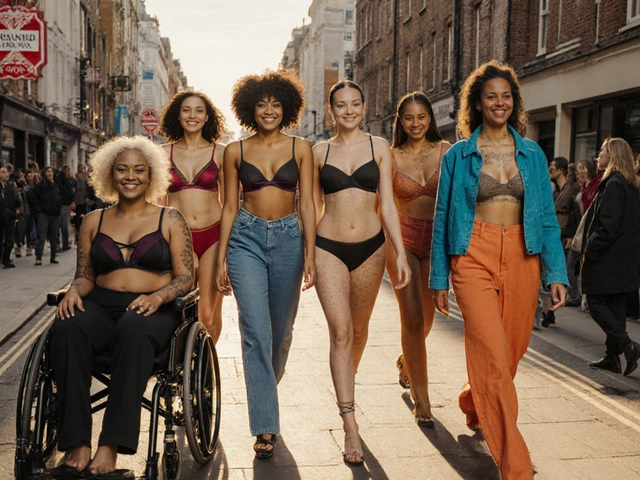

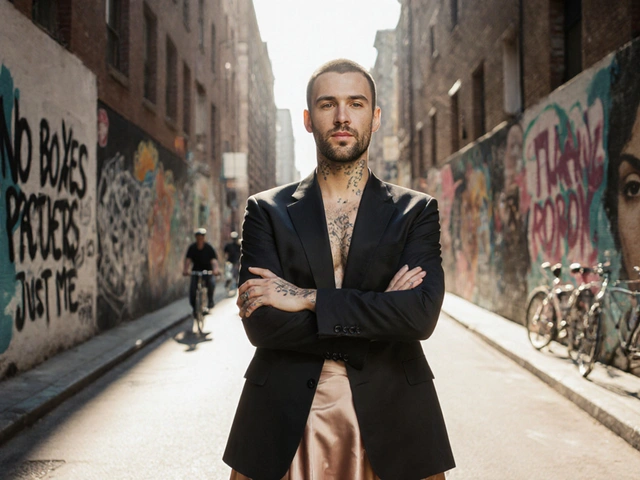
November 5, 2025 AT 08:59
Laurie Ralphs
OMG I just cried reading this 😭 I’m 32, plus-size, and have stretch marks from pregnancy-AND I JUST BOOKED MY FIRST GIG WITH A SMALL INCLUSIVE BRAND!! I posted a pic in a bikini with my belly and cellulite and tagged #BodyPositivity and like 300 people DM’d me saying ‘I thought I was the only one’-I’m not even a model, but now I feel like I belong?? This article? It’s not just fashion. It’s therapy. Thank you for existing. I’m sending this to my 14-year-old niece. She’s been hiding in hoodies since middle school. Now she’s asking for a camera. 🥹💖
November 7, 2025 AT 01:32
Anwen Caedmon
Oh please. ‘Breaking barriers’? More like woke corporate marketing. Dior still doesn’t have a single plus-size model in their main campaign. And don’t get me started on how they pick ‘diverse’ faces that are still skinny, young, and photogenic. Real diversity? Nah. They just swapped one stereotype for another. And now we’re supposed to clap because a 23-year-old with vitiligo walks a runway? Cute. Meanwhile, my 70-year-old mum with arthritis and a prosthetic leg can’t even get cast for a CVS ad. #TokenismIsStillTrending
November 7, 2025 AT 10:03
ANDRES BELLO GARCIA
This is good. People deserve to see themselves. No more hiding. Just be you. That’s all.
November 8, 2025 AT 13:23
Ashley Williams
Y’all. I’m a 48-year-old Black woman with alopecia. I’ve been modeling for 12 years-mostly local gigs, indie brands, nothing big. But I started posting my bare scalp in natural light with bold red lipstick. One day, a DM from Aerie. They flew me to NYC. No retouching. No wig. Just me. And guess what? The campaign got 2.3 million likes. I didn’t ‘break’ a barrier. I just showed up. And now? I’ve got three girls in my town with cancer, asking if I’ll help them take their first photos. This isn’t about fashion. It’s about saying ‘I see you’ when the world looks away. Keep going. You’re already enough. 💪🏽
November 9, 2025 AT 16:59
Carolyn Kay
Okay, but let’s be real-this article is full of grammatical errors. ‘They’re not just walking runways’-should be ‘They’re not just walking ON runways.’ Also, ‘no retouching. no hiding.’ That’s two sentences without capitalization. And ‘the industry is finally listening’? No. It’s just cashing in. And why is everyone so obsessed with ‘real’ bodies when the models are still airbrushed to within an inch of their lives? Look at Lila Moss’s photos-her vitiligo is subtly enhanced in post. It’s not authenticity. It’s curated trauma porn. And don’t even get me started on the capitalization of ‘Non-binary’ as if it’s a proper noun. Ugh. I’m exhausted.
November 11, 2025 AT 07:39
Olga Jonkisz
Ugh, I’m so over this ‘representation’ nonsense. Everyone’s so desperate to be ‘seen’ they’ve turned modeling into a cry for validation. I mean, I have a degree in fashion design from Central Saint Martins and I’m 5’2” and have a scar from a car accident-I’ve been rejected by every agency in London. But now? Some 19-year-old with a tattoo on her neck gets a $2M contract because she ‘looks different.’ It’s not diversity. It’s performative. And don’t even mention the ‘non-binary’ thing. Gender is biology. Stop trying to rewrite physics with a runway. 🙄
November 11, 2025 AT 07:53
somya katiyar
This is beautiful. I’m from India, and here, fair skin is still the ideal. I’ve seen girls cry because their skin tone is ‘too dark’ to be a model. But now, I see women like Priyanka Chopra and Nidhi Bisht on billboards-and it’s changing things slowly. My cousin just started posting her photos with her hijab and stretch marks. She’s getting hate comments, but also so many messages from girls saying ‘I want to be like you.’ Maybe change doesn’t need to be loud. Maybe it just needs to be steady.
November 12, 2025 AT 06:39
Timi Shodeyi
Love this. In Nigeria, we have this myth that ‘real beauty’ means light skin and thin waist. But I’ve seen young girls in Lagos with albinism, vitiligo, and even amputated limbs walking in local fashion shows now. One girl, Ada, lost her leg in a bomb blast at 12. She modeled last year with a prosthetic leg and a lace gown. The crowd stood up and clapped for 10 minutes. That’s not trend. That’s truth. And the brands? They’re not just selling clothes-they’re selling dignity. Keep going. We’re watching.
November 13, 2025 AT 16:43
F. Erich McElroy
Yeah, yeah, ‘breaking barriers’-but let’s be honest, this is just a PR stunt to sell more leggings. The real models? The ones with real disabilities, real scars, real acne? They’re still not on the cover of Vogue. They’re in the ‘diversity’ section of a brand’s Instagram carousel. And don’t even get me started on how they pick the ‘perfect’ ugly. Like, the models are still hot. They just have a freckle or a tattoo now. It’s not inclusion. It’s aesthetic capitalism. And you know what? I’m tired of being told to ‘feel inspired’ by someone who’s still a 22-year-old Instagram influencer with a $50K contract. Real change doesn’t come from a runway. It comes from a living room. From a mom telling her daughter she’s beautiful as she is. Not from a brand that profits off her pain.
November 15, 2025 AT 06:16
Brittany Parfait
My grandma’s 74. She’s never modeled. But she started posting selfies in her garden with her cane and her silver curls. No filter. Just her. Now she has 12K followers. Kids write her letters saying she’s the first person who made them feel okay about aging. That’s the real runway. Not the one with lights and cameras. The one where someone says, ‘I’m still here. And I’m beautiful.’